 Add My Company
Add My Company
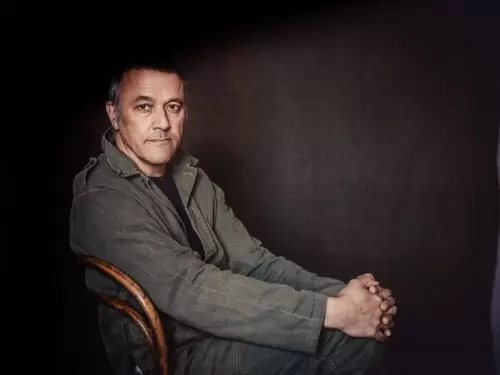
Six time RHS Chelsea medalist and the only gardener to win Best in Show in consecutive years, Cleve West is a Chelsea Flower Show legend! And we have interviewed him, just for you!
Welcome Cleve. You have created six Chelsea gardens, winning best in show twice in consecutive years, something only you have achieved. Which was your favourite garden to create and why?
Hmm…good question. The last one (for M&G 2016) was special for me as it was influenced by teenage memories of Exmoor National Park where I grew up. The gnarled trees (Quercus pubescens sourced by Hortus Loci) really caught the atmosphere I wanted to create. There was also some great craftsmanship (as always) from Steve Swatton (Swatton Landscape) who ended up winning the award for Best Contractor.

Cleve West M&G Garden 2016
That said, the Telegraph Garden (2011) and Brewin Dolphin (2012) are very close to my heart. They were quite different in character, but both carried an energy that exceeded my expectations.

Cleve West Dolphin Brewin Garden
Your first Chelsea garden was in 1994, what have the biggest garden changes been both at the show and in gardening in general over that time?
I think the awareness of just how important plants are in our lives now and how they are not just pretty to look at and good to eat but also key to our survival. Show gardens are not real gardens but theatre, contrived to get as much attention for the sponsor as possible or to highlight a particular issue, campaign or message. At Chelsea this year, many gardens are emphasising the importance of nature which, given the various environmental issues we’re facing, is not surprising. The Centrepoint Garden will use weeds like nettles dandelions and even bindweed to help people understand just how important weeds are especially where land has been disturbed. It will challenge this outdated notion of ‘horticultural perfection’ and ask us to re-calibrate our aesthetic barometers so that we see the beauty of so-called ‘weeds’ as a vital part of the repair process. Some people won’t like or appreciate it but seeing/understanding the inherent beauty and importance of nature’s outriders and relaxing our grip what we want our gardens to look like is key to tackling some of the serious environmental challenges we’re currently facing.
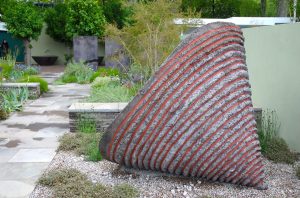
Cleve West Saga Insurance garden.
You said you wouldn’t return to Chelsea but you are back after seven years with a show garden for Centrepoint. What is it about this charity that inspired you to create a garden for them?
Haha! I think every designer says never again after each show garden, especially small practices like mine. I think I really meant it after 2016 but thought that if I did get a chance to work with a charity I’d consider it. Centrepoint is an amazing charity, so it was difficult to say no, especially as Chelsea is such a big stage on which to raise awareness about homelessness. The minute I was asked to consider it an idea came to mind so I figured if they were brave enough to run with it, I’d do it. Fortunately, they were. The other factor is that Project Giving Back will be sponsoring the garden so the cost of making the garden won’t be borne by the charity.
Your Chelsea 2023 garden centres on a derelict, Victorian house, reclaimed by nature, what will be your biggest challenges in creating this garden? (Ironically, will it be the weeds?)
Yes, of course it’s the weeds! There’s no way I’ll be able to recreate an overgrown ruin as the plants we need just aren’t available in containers. Also it’s a bit of a stretch for Hortus Loci (our nursery) to supply plants that don’t look perfect. They are being very brave taking this on and I’m very grateful.
The Chelsea Flower Show is usually associated with horticultural excellence and perfection which is understandable but completely at odds with what happens naturally. So we’ll try and create a garden that capture the middle ground, somewhere between show garden and real garden…getting this to look convincing will be the challenge but we’ll give it our best shot and hopefully the dandelions will be in flower or blowing their clocks around the Royal Hospital grounds!
Who are the designers you admire most?
Gosh there are so many…John Brookes was my teacher, mentor and friend and has had a big influence on me. Dan Pearson, who I first met in 1990 was probably the first to make me think more seriously about what I wanted to achieve. Since then (in no particular order) I’ve enjoyed the work of Piet Oudolf, Steve Martino, Sarah Price, Tom Stuart Smith, the Bannermans, Nigel Dunnet, Thomas Doxiadis, Benjamin Vogt and many more.
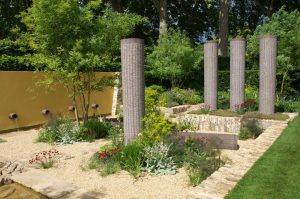
You first enjoyed gardening in your aunt’s garden and then went on to study at KEW, if you could go back in time, what advice would you give your younger self about building a career as a garden designer?
I’d used up all my college time studying art and physical education so my short course at Kew with the late John Brookes was all I could afford at the time. I’d tell myself to learn more about plants, ecology and entomology. I’d also advise myself to be more disciplined with a sketchbook and learn more about business and marketing – the notion of ‘profit’ was alien to me until quite late in my career!

Cleve West Studied at Kew Gardens. Chilstone made the finals that adorn the roof of the temperate house.
You are a passionate advocate for veganism and animals, how can garden design help gardeners to positively contribute to encourage wildlife and help fight climate change in their own gardens?
Becoming vegan and an advocate for animals has been the most pivotal and life-affirming decision I’ve ever made especially as it’s the most effective way of reducing our impact on the planet. It’s much easier than people would have you believe because, basically, it’s an inaction; you just stop paying for anything that exploits or harms animals. The only regret for most vegans is not doing it sooner. My early advocacy was fuelled by the film Earthlings and the sheer horror of what millions of animals face every minute of everyday for the sake of a sandwich. Today, not only do I understand the damage that animal agriculture inflicts on our health, the climate and the environment but also, I’m thinking more about the work we do as gardeners and designers and the harm we might inadvertently cause to existing ecosystems. Clearly, we’re not going to stop gardening altogether for fear of harming insects, invertebrates or soil structure but changing the way we interact with the natural world is crucial to the health of the planet.

Cleve West is one of the most successful garden designers in the horticultural business.
There are ways of gardening that can reduce the amount of damage and create spaces and plant communities that can boost biodiversity by being attractive to wildlife in terms of food and habitat. For example, being less fastidious about weeding will provide more diverse habitat and food for pollinators and other insects. Habitat piles, not sweeping up leaves, long grass and a patch of nettles may not be everyone’s idea of a beautiful garden but they do provide valuable habitat and food while allowing a whole range of interactions (through decay) which are vital for the dynamics of a healthy garden.
No-dig gardening, aside from saving time and osteopath bills, reduces the amount of carbon lost to the atmosphere and reduces damage to fungal threads and soil structure and improves fertility and plant health.
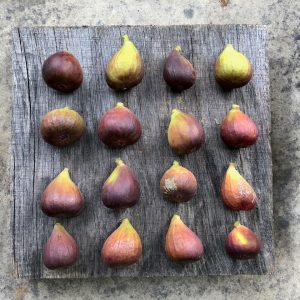
Cleve grows a wide variety of produce from his allotment.
You often use sculpture in your gardens, starting your career in partnership with Johnny Woodford, what are your tips on using statues and sculptures and how can that be replicated in domestic gardens?
Yes, I enjoy using sculpture where possible and I’ve been lucky to collaborate with great sculptors such as Johnny Woodford and also Serge and Agnes Bottagisio-Decoux. It’s easier to use sculpture in show gardens where an element of theatre is essential to capture the imagination of show-goers. There are, of course, opportunities for using sculpture in private gardens but the choice and placement of sculpture needs careful thought and consideration. This year I’m delighted that Johnny Woodford will be making some bird boxes for the Centrepoint Garden. Naturally they’ll be more than your average bird box but I’m looking forward to seeing what he comes up with.
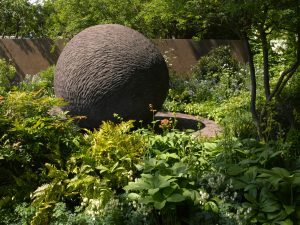
If you created a garden using Chilstone’s garden ornaments what would you use as the centerpiece and how would you style it?
Much would depend on the garden and its setting but I’m drawn to urns and busts. Urns (Chalybeate Urn, Pope’s Urn, William Kent urn etc)
work well as obvious focal points. I also like busts and figurative pieces. These also work well as focal points but I enjoy finding them in quieter, more secret parts of larger gardens adding a sense of mystery and discovery.
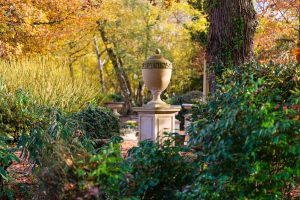
Chilstone’s William Kent Urn and pedestal.
You are passionate about your allotment. What is your favourite thing to grow?
Yes we’re on our 23rd season at Bushy Park Allotments and we still get a lot of pleasure from growing and eating our own organic food. Finding the time to do this efficiently is difficult but the process of growing food (not just the end product) is great exercise and quite therapeutic in its own way.
Our favourite veg to grow is without doubt tomatoes. When it comes to taste, there’s no comparison between home grown and shop-bought tomatoes. These days, aside from tinned, we hardly ever buy tomatoes out of season as they are so disappointing. This year, productivity is bound to be impacted by my involvement at Chelsea but we’ll do our best to at least have a decent crop of tomatoes come summer.
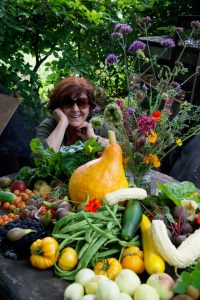
Cleve grows his own produce.
You recently tried the ‘No Dig’ concept at your allotment. What are your tips for making compost?
We tend to compost everything, literally everything (that’s not derived from animals) including kitchen waste, weeds and even bindweed and couch grass roots which are dried out before adding them to the heap. By accident we found that woodchip used for our paths made great compost after a couple of seasons. Later we learned that woodchip is regularly used by Iain Tolhurst at Tolhurst Organics so small-branch woodchip is always welcome. Currently, we haven’t got enough compost for our no-dig regime but we’re building more heaps and hope to be self-sufficient one day. In the meantime, we’ve noticed much more worm activity since adopting no-dig so, despite not having enough compost to cover the whole plot each year, the soil does maintain a reasonable fertility for what we want to grow.
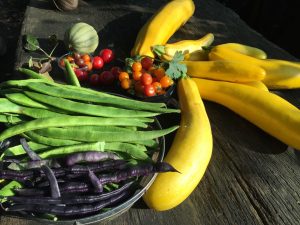
Any top tips on growing rhubarb? (We struggle and it’s thriving on your allotment!)
Our rhubarb struggled in the dry summer last year and is noticeably less vigorous when we don’t mulch. I’m no expert but mulching with some decent compost and keeping moist during severe drought is probably the key to success.
Thank you so much for your time, Cleve and best of luck with your Chelsea Garden!
Cleve West’s Centrepoint Garden will be on Main Avenue at the RHS Chelsea Flower Show. Discover more about the inspiration for the garden here.
For more information on EXCLUSIVE- INTERVIEW WITH GARDEN DESIGNER LEGEND CLEVE WEST! talk to Chilstone Architectural Stone & Garden Ornaments

